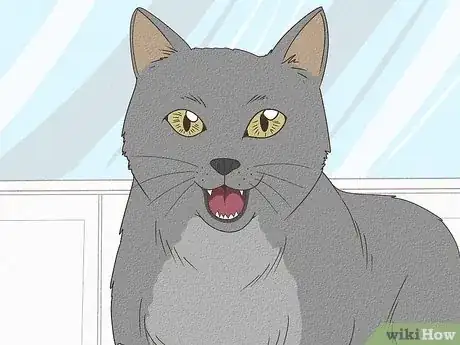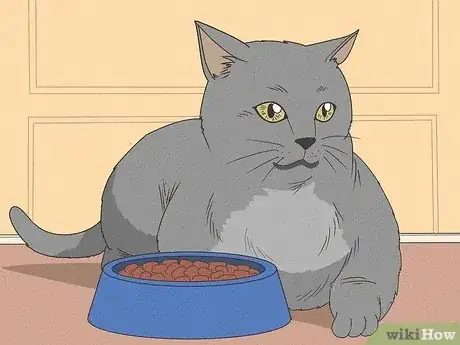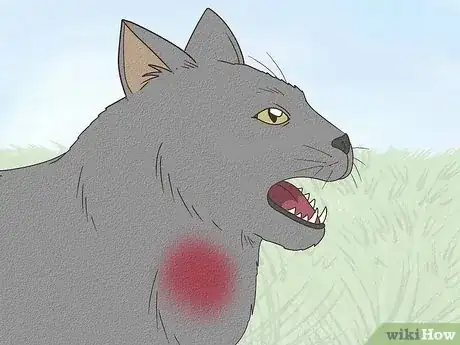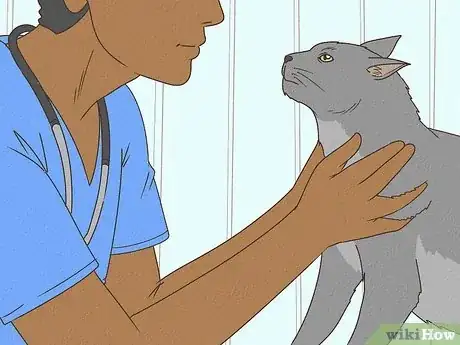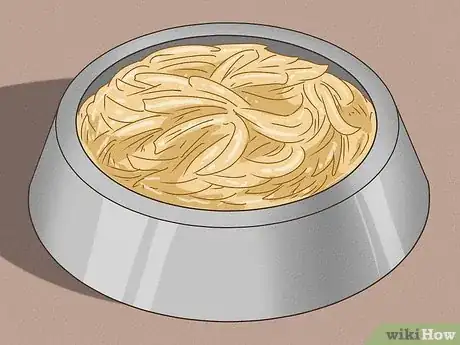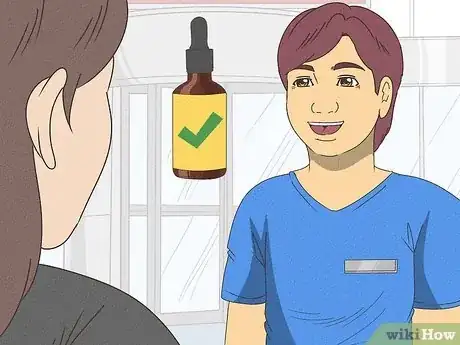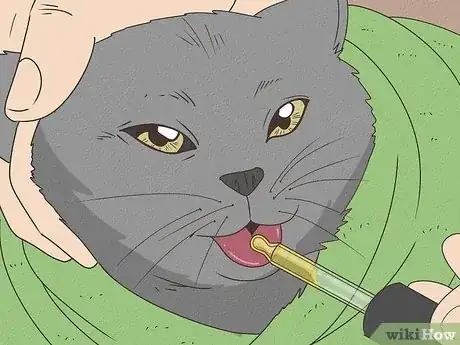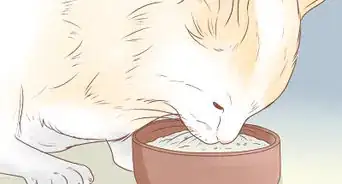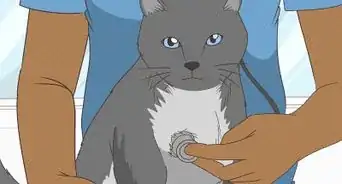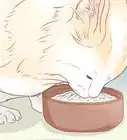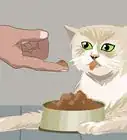This article was co-authored by Deanne Pawlisch, CVT, MA. Deanne Pawlisch is a Certified Veterinary Technician, who does corporate training for veterinary practices and has taught at the NAVTA-approved Veterinary Assistant Program at the Harper College in Illinois and in 2011 was elected to the board of the Veterinary Emergency and Critical Care Foundation. Deanne has been a Board Member of the Veterinary Emergency and Critical Care Foundation in San Antonio, Texas since 2011. She holds a BS in Anthropology from Loyola University and an MA in Anthropology from Northern Illinois University.
This article has been viewed 86,250 times.
Cats don’t let their owners know when they feel bad. As a survival instinct, they hide any weakness, even pain. If your cat has a sore throat, you may have trouble recognizing it. However, there are symptoms you can look for that indicate a sore throat. Watch your cat for a change in their meow, a decrease in appetite, and/or any drooling or coughing.
Steps
Recognizing the Symptoms of a Sore Throat
-
1Notice a change in the cat’s meow. Your cat’s meow can help you determine if they have a sore throat. Listen to them when they meow. Their meow might sound quieter, raspier, or thinner than usual. If there is a change in the way the meow sounds or a noticeable difference in the way the cat sounds, it might point to a sore throat. [1]
- Your cat may also stop meowing completely.
-
2Monitor your cat’s eating habits. Cats who experience sore throats may stop eating because it hurts or is difficult to swallow. They may also stop drinking. Watch the way your cat eats to make sure their eating habits have not changed. If your cat stops eating or drinking, they may become dehydrated or weak.[2]Advertisement
-
3Listen for any coughing. Coughing may be a symptom of a sore throat. The cat may cough excessively or sound like they are trying to get something out of their throat. The cat may also start gagging.[3]
-
4Notice any drooling. Cats may experience a sore throat that is related to some kind of mouth pain. If this is the case, they may begin drooling because their mouth hurts. Notice if your cat begins drooling, if there is excess saliva around the mouth, or if they start excessively licking their lips.[4]
-
5Decide if there is a reason for your cat’s sore throat. Your cat’s behavior may help you decide if they have a sore throat. Cats who meow a lot or more than usual in one single day may develop a sore throat. If your cat has certain medical conditions, like an upper respiratory infection, it may also lead to a sore throat.[5]
Treating the Sore Throat
-
1Take your cat to the vet. If your cat is showing symptoms that indicate a sore throat, you should take them to the vet. Sore throats may be a symptom of a more serious condition, such as cat flu, an upper respiratory infection, or laryngitis.[6]
- Your vet needs to do an exam to determine the cause of the sore throat and figure out an appropriate treatment based on that diagnosis.
- Your cat’s vet may also perform an endoscopic exam and/or culture of the fluid in the back of the throat.
-
2Give your cat soft food. Since hard food can irritate a cat’s sore throat, feeding them soft food can encourage them to eat. Use meat-based baby foods, like chicken or turkey. Your cat may be willing to eat if it is soft so it doesn’t hurt when they swallow.[7]
- You can also try chopped up sardines or roast chicken.
- You may also ask your vet about an invalid diet.
-
3Ask the vet for pain medication. Mild pain meds can help your cat’s sore throat and allow them to swallow. Talk to your vet about what pain medications will be appropriate for your cat.[8]
-
4Give your cat prescription medication. Your cat’s throat may be sore because it is inflamed or infected. If your vet determines this is the underlying cause, they will prescribe medication to treat the underlying condition.[9]
- If the cat has an infection that affects the throat, the vet will prescribe antibiotics.
- If the sore throat is caused by inflammation from an allergic reaction, the vet will prescribe steroids.
References
- ↑ https://www.vetary.com/cat/condition/laryngitis
- ↑ https://www.bluecross.org.uk/pet-advice/cat-flu
- ↑ https://vcahospitals.com/know-your-pet/coughing-in-cats
- ↑ https://www.petcha.com/top-10-signs-your-cat-has-oral-pain/
- ↑ https://www.bluecross.org.uk/pet-advice/cat-flu
- ↑ https://www.vetary.com/cat/condition/laryngitis
- ↑ https://www.bluecross.org.uk/pet-advice/cat-flu
- ↑ https://www.vetary.com/cat/condition/laryngitis
- ↑ https://www.vetary.com/cat/condition/laryngitis
About This Article
To tell if a cat has a sore throat, listen for a change in the cat’s meow, which might sound quieter, raspier, or thinner than usual. Your cat may also stop meowing completely. Monitor your cats eating habits, since cats with sore throats sometimes stop eating and drinking normally. Excessive coughing and drooling are also symptoms of a sore throat. For tips on treating your cat's sore throat, read on!
